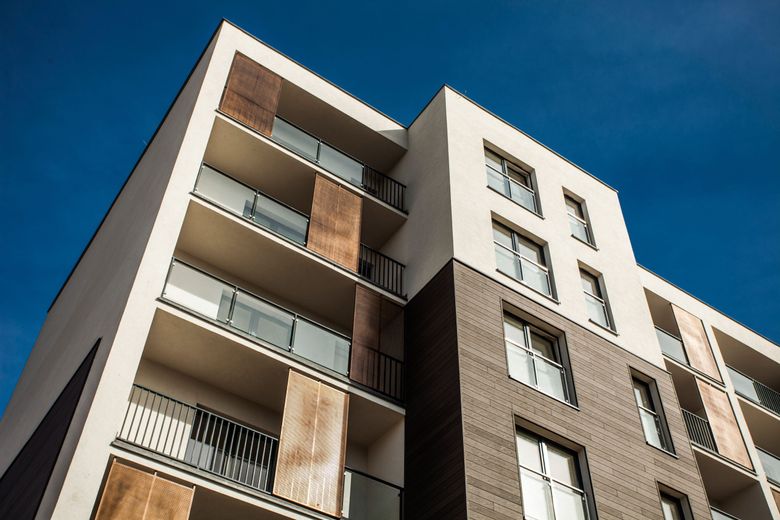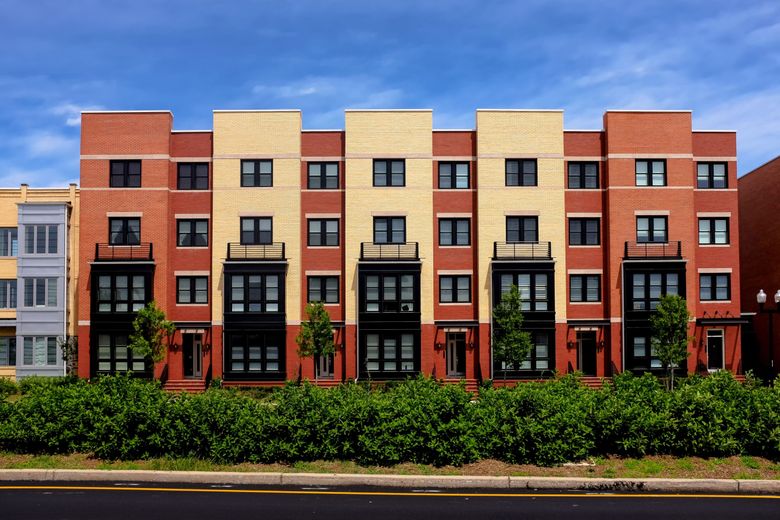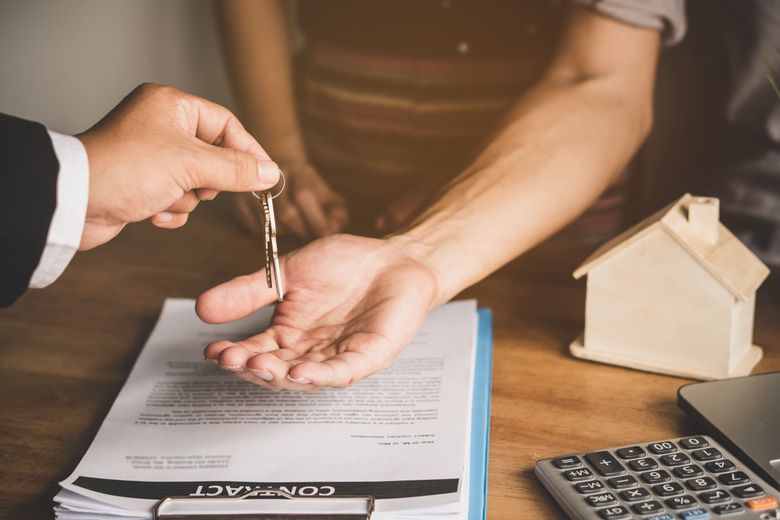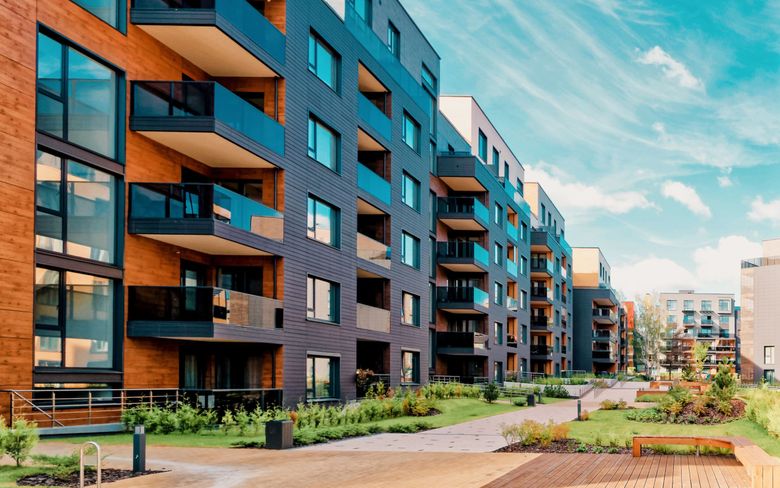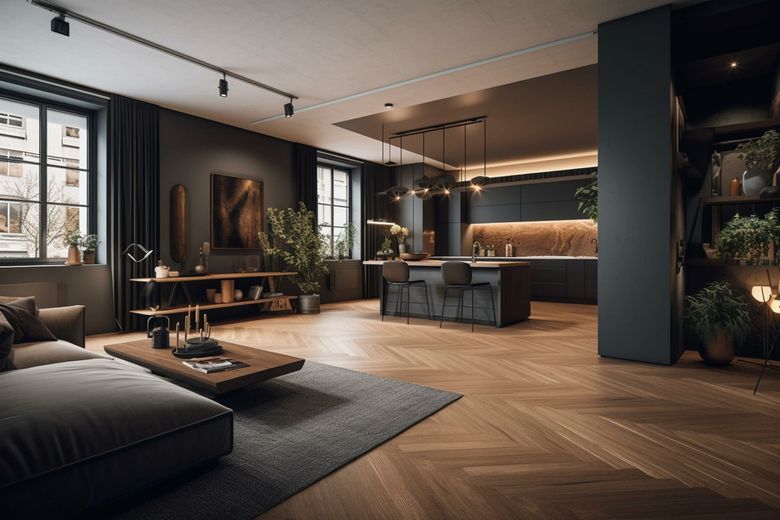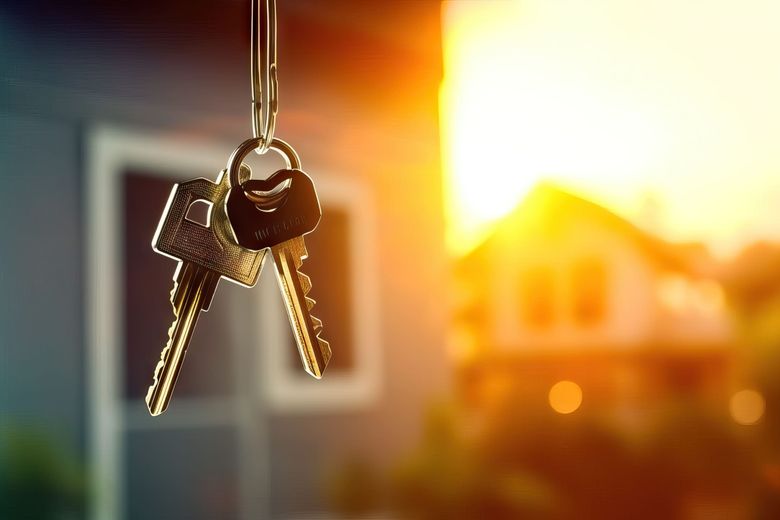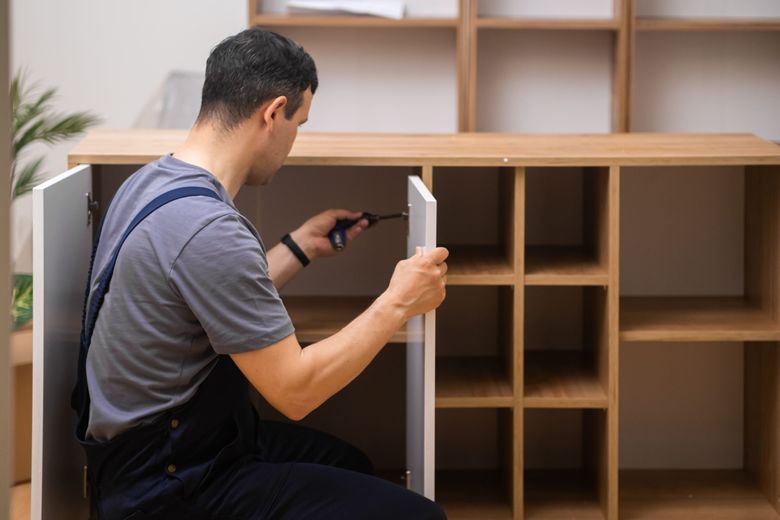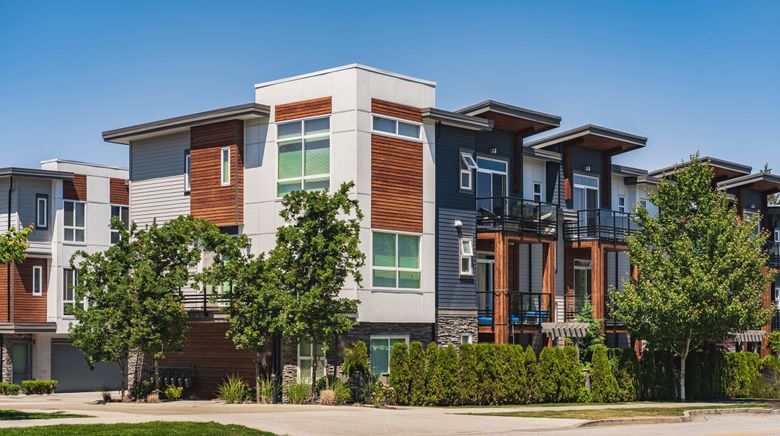Welcome to the world of real estate management, where every day presents a unique challenge and an opportunity to make a property truly shine. If you’re a landlord or property manager, you’re undoubtedly familiar with the term “apartment turnover.” It’s a phrase that encapsulates the pivotal moment when one tenant bids adieu to their old abode, and another eagerly steps in to make it their own. Apartment turnover is the heartbeat of property management, a critical process that defines the rhythm of your business.
But what exactly is apartment turnover, and why does it matter so much? In this comprehensive guide, we’ll delve into the intricacies of this essential aspect of property management. We’ll start by defining apartment turnover, dissecting its components and complexities. From there, we’ll explore the profound importance of executing this process with precision and care, revealing how it can impact your bottom line and the overall satisfaction of your tenants.
As we journey through this guide, we’ll also outline the purpose and scope of our exploration. You’ll find practical insights and expert advice that will not only help you navigate apartment turnover successfully but also elevate your property management game to new heights. Whether you’re a seasoned landlord or just embarking on this adventure, this guide is your compass for ensuring your properties are not just places to live, but spaces where dreams are nurtured and fulfilled.
So, fasten your seatbelt and get ready to embark on a comprehensive exploration of apartment turnover—a process that holds the keys to a thriving real estate venture and the satisfaction of countless tenants who call your properties home.
Key Takeaways
- Minimizing vacancy periods and reducing turnover costs can significantly impact a landlord’s bottom line. By streamlining the turnover process, landlords can not only save money but also increase their rental income. This involves everything from scheduling repairs and cleaning promptly to conducting thorough tenant screenings to find reliable, long-term renters.
- Landlords should maintain clear communication channels with outgoing and incoming tenants, detailing expectations and responsibilities during the turnover process. Additionally, documenting the property’s condition before and after a tenant’s occupancy can help resolve disputes and protect both parties’ interests. A comprehensive record-keeping system can be a landlord’s best friend when it comes to turnover-related issues.
- Reducing turnover isn’t just about preparing a vacant unit for a new tenant; it’s also about retaining good tenants. Landlords can save time, money, and effort by implementing tenant retention strategies. This includes responsive maintenance, periodic property inspections, and creating a positive living environment that encourages tenants to renew their leases. By focusing on tenant satisfaction and fostering positive landlord-tenant relationships, landlords can significantly decrease the turnover rate, ensuring a more stable and profitable rental property.
Suggested Posts
- Condos vs. Apartments | Your Guide To Choosing The Right One
- How To Create A Lease Extension Agreement?
- Choosing The Best Access Door Controller System In 2023
What Is An Apartment Turnover?
Apartment or rental turnover typically denotes the time frame during which a tenant departs from a property, and the property remains unoccupied until a new tenant takes occupancy. No rental income is generated during this vacant period, but various expenses and bills related to the property still need to be settled. Given that turnover expenses can be substantial, most landlords exert considerable effort to minimize the duration of these intervals.
Apartment Turnover Rate = Total number of move outs in a year / Total number of tenants retained in that year
Things to keep in mind:
- As reported by the National Apartment Association, the apartment turnover rate in 2018 stood at 46.8%, marking a significant decrease compared to the previous year.
- For property managers and landlords, the tenant turnover rate serves as a crucial metric when it comes to financial planning.
- You can easily determine your tenant turnover rate by dividing the number of tenants who relocated during a given year by the total number of tenants you had during that same year.
- The apartment turnover rate is the proportion of tenants who vacate a property at the conclusion of each lease term.
- This rate is frequently utilized by landlords to assist in budgeting, determining rental rates, and other considerations, as it enables them to forecast the amount of resources they may need to allocate for turnover periods.
Why Is Apartment Turnover Rate Important?
The Significance of Monitoring Turnover Rates
- Assessing your turnover rate in relation to industry benchmarks is a vital means of evaluating the performance of your property management enterprise.
- These turnover rates exert a considerable influence on the overall profitability of your business.
- By keeping tabs on your turnover rate, you can gain valuable insights into resident satisfaction levels and pinpoint areas requiring enhancement.
- When your turnover rate significantly exceeds industry norms, it may serve as an indicator that your operational procedures necessitate adjustment and that residents may be dissatisfied.
- Evaluating the reasons behind resident departures can offer valuable insights into your existing processes.
Calculating Your Turnover Rate
- Determining your turnover rate involves a straightforward mathematical computation.
- First, divide the number of residents who moved out within a year by the total count of residents residing in your properties.
- Next, multiply this result by 100 to express it as a percentage.
- As an illustration, if you manage 1,352 residents across all your properties and 487 of them relocated during the course of a year, the following formula can be applied:
Turnover Rate = (Number of Residents Moved Out / Total Number of Residents) 100
Turnover Rate = (487 / 1,352) 100 = 36.02%
This calculation indicates that your average annual rental turnover rate stands at 36.02%. This figure can be compared to the national average, which was 45.2% in 2022, revealing that your turnover rate is relatively healthy.
The Importance of Tracking Turnover Rates
- Vigilantly tracking your turnover rate holds significant importance for enhancing your bottom line and gleaning valuable insights regarding the management of your properties.
- For instance, if you observe elevated turnover rates and notice recurring themes in resident feedback from exit surveys, you can pinpoint specific areas that require attention and improvement.
Relationship Between Apartment Turnover Rate And Property Investment
Importance of Apartment Turnover Rate in Cash Flow Analysis
- The apartment turnover rate is a pivotal factor to consider when constructing projected cash flows for an apartment building.
- It plays a central role in determining the anticipated net operating income (NOI) over the investment’s holding period.
- As such, meticulous scrutiny of turnover and lease renewal assumptions is essential for apartment investors.
Foundations of Assumptions
- To establish reliable assumptions, investors must draw upon a comprehensive understanding of the property’s turnover rates over the past three years, at the very least.
- These historical figures serve as the foundational basis for shaping future assumptions.
- Accurate projections depend on grasping and ideally, having access to proficient forecasts that illuminate the trajectory of three key factors: turnover rates, lease renewals, and rental market dynamics within the property’s urban area.
Adjusting Turnover Rates
- The current turnover rate of the property should be adjusted in accordance with the expected movements of these aforementioned factors.
- Depending on forecasts and insights, adjustments may either increase or decrease the initial turnover rate assumption.
- These adjustments should also factor in any planned enhancements to the property, designed to enhance its appeal, as well as the management team’s efficacy in retaining tenants.
What Causes An Apartment Turnover?
Understanding Apartment Turnover Rates
In this organized breakdown, we’ll explore the factors affecting apartment turnover rates, as revealed by the 2019 NAA Survey and an insightful econometric analysis. Apartment turnover rates, a key metric in the real estate industry, can shed light on various aspects of the rental market.
National Apartment Turnover Trends
- According to the 2019 NAA Survey of Operating Income & Expenses in Rental Apartment Communities, the national apartment turnover rate experienced fluctuations in recent years.
- 2017 and 2018 Declines: The turnover rate showed a declining trend in 2017 and 2018.
- 2019 Increase: In 2019, the average turnover rate among survey respondents increased to 51%, marking a three-percentage-point rise compared to the 2017 average. This upswing implies that more residents were relocating, likely due to various factors such as improved rental options or increased income, enabling them to upgrade or consider homeownership.
- In 2019, a study conducted by the United States Census Bureau revealed that 17% of Americans had to leave their apartments because of housing-related problems. These problems encompassed issues like maintenance concerns, inadequate communication, and sudden rent hikes.
Determinants of Apartment Turnover Rates
A comprehensive econometric analysis conducted by Real Page has identified key determinants influencing apartment turnover rates in metropolitan areas across the United States.
- Employment Growth: The study highlights a strong positive correlation between an area’s employment growth rate and its average turnover rate. In essence, areas with robust employment growth tend to witness higher turnover rates. This phenomenon is attributed to the availability of job opportunities, prompting individuals to move closer to their workplaces.
- Tenant Age: The age of tenants plays a crucial role in turnover rates. Younger tenant populations tend to result in higher turnover rates. Empirical studies on household mobility support this finding, suggesting that younger households are more likely to relocate. In particular, cities with high turnover rates typically have a median population age of 38 years or less.
- New Apartment Supply Growth: The growth of new apartment supply positively impacts renter turnover rates. Markets experiencing rapid growth in new apartment construction tend to have higher turnover rates. This can be attributed to tenants having more options in terms of units and locations, leading to increased mobility as they explore alternative housing arrangements.
Some More Factors To Consider
1. Maintenance Troubles
- Living in a constantly deteriorating environment is universally undesirable.
- The longer it takes to address maintenance issues, the more discontent your tenants will become.
- Those with the option to leave will not tolerate pests, leaky roofs, unpleasant odors, or plumbing problems.
- Furthermore, they will depart with unfavorable reviews, tarnishing your brand reputation.
2. Inadequate Communication
- Your responsibilities as a property manager extend beyond renting out the property.
- Establishing an accessible channel of communication with your tenants is crucial.
- Being readily available to address concerns like tenant disputes, noisy neighbors, or maintenance requests can prevent minor issues from escalating.
- Poor communication, on the other hand, leads tenants to leave rather than continually voicing grievances.
- Effective communication fosters a healthy tenant-manager relationship and enables you to address issues proactively.
3. Financial Strain
- Tenants often relocate due to an inability to bear increased rent costs.
- Unexpected expenses such as accidents, job loss, or medical emergencies can trigger a move.
- Rent hikes often force tenants to cut back on essentials like food, transportation, or heating, leading them to seek more affordable accommodations.
4. Neighborhood Quality
- High rental vacancies are common in areas that lack security, suffer from noise disturbances, or exhibit abusive behavior.
- A home should be a sanctuary of tranquility. Imagine returning from a long day’s work only to endure loud neighbors or ongoing construction noise.
- Healthy, cooperative, and peaceful surroundings attract more tenants.
- If you’re screening potential tenants for an unsuitable neighborhood, it may be time to revise your selection criteria.
5. Changing Life Circumstances
- Numerous tenants relocate following changes in their relationship status.
- Individuals experiencing breakups, separations, or divorces often seek smaller living spaces, while growing families may require larger accommodations.
6. Career Opportunities
- Job-related relocations are a common cause of property vacancies.
- With 31.2% millennials making up a significant portion of renters, frequent moves are to be expected.
- Many tenants move closer to their workplaces to reduce commuting costs, as relying on services like Uber isn’t always practical.
Breaking Down Apartment Turnover Costs
Frequent changes in apartment occupancy can significantly undermine the profitability and smooth progression of your business endeavors.
Things to keep in mind:
- On average, each instance of a vacant apartment unit incurs a cost of approximately $1,825.
- Neglecting to closely monitor your tenant turnover rates exposes you to the risk of accumulating substantial vacancy-related expenses.
- To shield yourself from unexpected financial shocks, it is imperative to thoroughly assess all the financial implications associated with tenant turnover.
- These encompass a spectrum of expenses, ranging from cleaning and repair costs to expenditures incurred during property viewings.
- A comprehensive breakdown of these costs will empower you to manage your finances effectively and appreciate the benefits of minimizing apartment turnover.
Financial Considerations
Consider these financial burdens borne by property managers when their properties remain unoccupied for extended periods:
1. Loss of Rental Income
- Foremost among these costs is the daily loss of rental income, a burden that property managers and landlords find particularly burdensome.
- As highlighted by Kaycee Miller, the Marketing Director at Rentec Direct, in her blog, “Every day a property remains vacant translates to zero rental income.”
- The duration of vacancy directly correlates with the depletion of rental income, thereby diminishing cash flows.
- While this cost varies based on the property’s size, it typically amounts to around $1,600 per unit.
2. Tenant Screening Expenses
- Tenant screening represents one of the most arduous tasks for leasing agents.
- After identifying the top three potential tenants, property owners must invest in credit checks, engage in discussions with employment and personal references, scrutinize income documents, and more.
- These processes consume a substantial portion of financial resources, both in terms of expenses and staff time, which could otherwise be allocated to promoting the company and other vacant units.
3. Expenses Related to Property Viewings
- Until virtual property tours become the industry standard, tenant decisions often hinge on in-person property viewings.
- Conducting frequent property viewings necessitates multiple visits to the site each week, leading to unwanted transportation costs and time expended on no-shows.
- Property showings are not as straightforward as they may seem. Last-minute cancellations and inefficient screening processes may result in the presentation of the property to unqualified tenants.
- To streamline this process and spare you the associated hassles, we recommend automating your leasing procedures through an AI assistant.
- Through AI assistants, you can pre-screen tenants, schedule tours, and respond to renter inquiries, ultimately saving up to 70% of your leasing team’s time, which can then be directed exclusively towards qualified prospective tenants.
4. Advertising Expenditures
- The days when a simple “For Rent” sign could attract quality tenants have long passed.
- In today’s competitive market, relying solely on word-of-mouth is insufficient.
- You must market your vacant properties on reputable online listing platforms and rental housing boards, often incurring significant costs.
- In the event of unsatisfactory results, you may even need to invest in hiring a marketing agency or leasing specialist to take charge.
5. Cleaning and Repair Costs
- Can you expect potential tenants to express interest in a property that appears unkempt? Certainly not!
- Therefore, you must allocate funds for cleaning and repairs to ensure the property is move-in ready.
- Each time a tenant departs, property managers face substantial maintenance expenses, covering deep cleaning, repainting, carpet cleaning, lock, window, roof, and toilet repairs, among other things.
6. Leasing and Legal Expenses
- Whenever a new tenant is brought on board, property managers must navigate the legal complexities of lease agreement signing.
- This process may involve leasing staff spending time preparing and reviewing lease terms with potential tenants or investing in software to automate the entire procedure.
The Average Apartment Turnover Rate
Have you ever wondered why people move in and out of apartments in your neighborhood? In 2018, a study by the National Apartment Association found that about 46.8% of tenants moved out of their apartments each year, which was an improvement from the 50% rate in 2008.
Exploring Why People Move
When you look deeper into the world of renting apartments, you’ll notice that different areas have their own reasons for tenants moving in and out. Sometimes it’s by chance, but other times there’s a pattern to it.
Keep in mind that these are just possible reasons, not definite explanations. The most important thing is to understand the types of people living in your area and why they might want to move. If people often move for career opportunities, you can expect more turnover. If they’re settled and happy, turnover might be lower.
The College Student Shuffle
Areas with lots of college students often see a lot of turnover. Students come and go, some staying for a short time, others for longer.
The Older Resident Dance
Places with older residents tend to have less frequent turnover. As people get older, they often prefer to stay in one place, but this isn’t always the case.
The Job Opportunity Jump
Areas with plenty of job opportunities usually have more turnover. When there are job openings, people may move to find new work.
How Long Does Tenant Takeover Take?
The duration required to complete a tenant turnover can vary considerably based on numerous factors. Familiarizing yourself with these variables can assist you in effective planning to save both time and money, while also minimizing the potential repercussions of a lengthy turnover process.
Several primary factors influence the turnover timeline:
1. The extent of necessary repairs and improvements: The more extensive the repairs and enhancements needed for your rental unit, the longer it will take to complete the turnover. Coordinating with multiple contractors and waiting for their availability can result in unavoidable delays but might be unavoidable.
2. Availability of professional services: The time it takes to obtain professional cleaning, painting, or repair services can impact the overall turnover duration. Scheduling these services in advance can help shorten the turnover time.
3. Tenant move-out and move-in dates: Aligning the departure and arrival dates of your outgoing and incoming tenants can also affect the turnover schedule. Early communication with renters can contribute to a smoother transition.
4. Seasonal factors: The time of year plays a role in turnover times, as certain seasons may be more hectic for rental markets and service providers, making scheduling more challenging.
Things to keep in mind:
- Failing to swiftly turn over a rental unit can result in several adverse outcomes.
- One significant consequence is a loss of rental income because a prolonged turnover means your rental property remains unoccupied for an extended period.
- Extended vacancy periods can also lead to increased utility expenses, routine maintenance costs, and other expenditures related to maintaining the property’s condition.
- A unit that isn’t promptly turned over may appear neglected or unattractive to potential tenants, making it more difficult to secure a reliable new tenant.
Preparing for Apartment Turnover
Understanding Lease Termination
Types of Lease Agreements
When preparing for an apartment turnover, the first step is to understand the lease termination process. Lease agreements can vary significantly, so it’s crucial to identify the type of lease in place. The two most common types of leases are:
a. Fixed-Term Lease: This type of lease has a specified end date, and both the landlord and tenant are bound by the terms of the lease until that date. When the lease term is about to expire, the tenant may have the option to renew or move out.
b. Month-to-Month Lease: In this arrangement, the lease automatically renews on a monthly basis unless either the tenant or landlord provides proper notice to terminate. Typically, this requires a 30-day written notice, but local laws may vary.
Notice Periods
Notice periods play a critical role in lease termination. Depending on the type of lease agreement, there are specific notice requirements:
a. Fixed-Term Lease: In most cases, tenants must give notice at least 30 days before the lease expires if they intend to move out. Landlords also typically provide notice if they do not intend to renew the lease.
b. Month-to-Month Lease: Both tenants and landlords must adhere to notice periods. Tenants usually need to provide 30 days’ notice to terminate their month-to-month lease, while landlords may need to provide 30 or 60 days’ notice, depending on local regulations.
Communication with Outgoing Tenants
Pre-move out Inspections
Effective communication with outgoing tenants is essential to ensure a smooth apartment turnover process. Landlords should consider the following steps:
a. Schedule a pre-move out inspection: Before the tenant leaves, schedule a walkthrough inspection with the tenant to assess the condition of the apartment. This allows both parties to identify any needed repairs or cleaning.
b. Provide a checklist: Share a move-out checklist that outlines cleaning and maintenance expectations. This ensures that the tenant understands what is required to receive their security deposit back.
c. Discuss security deposit: Clarify the process for returning the security deposit, including deductions for any damages beyond normal wear and tear.
Final Walkthroughs
Once the tenant has moved out, conduct a final walkthrough of the apartment. During this process:
a. Document the condition: Take photographs and notes to document the condition of the unit. This will be essential in case of disputes over damages or security deposit deductions.
b. Compare with move-in condition: Compare the current state of the apartment with the condition it was in when the tenant moved in, using the move-in checklist.
Legal and Ethical Considerations
Security Deposit Refunds
Handling security deposits correctly is vital to ensure legal compliance and ethical treatment of tenants:
a. Timely refund: Many jurisdictions require landlords to return the security deposit within a specific timeframe, often 30 days after the tenant vacates the property.
b. Deductions transparency: If deductions are made from the security deposit, provide a detailed itemized list of the deductions, along with receipts and documentation supporting those deductions.
Fair Housing Act Compliance
Landlords must adhere to fair housing laws to avoid discrimination in the turnover process:
a. Equal treatment: Treat all tenants equally regardless of race, color, religion, national origin, sex, disability, or familial status. Ensure that tenant selection and treatment are based on objective criteria.
b. Reasonable accommodations: Provide reasonable accommodations and modifications for tenants with disabilities as required by law.
Tenant Rights and Responsibilities
Educate both incoming and outgoing tenants about their rights and responsibilities:
a. Provide a copy of the lease: Ensure that tenants have a copy of their lease agreement, which outlines their rights and responsibilities.
b. Privacy and notice: Respect tenant privacy rights and provide proper notice when entering the apartment for inspections, repairs, or other reasons.
Cleaning and Repairs
Thorough Cleaning
Cleaning Checklist
Proper cleaning is a crucial aspect of apartment turnover to ensure the unit is in its best possible condition for new tenants. Here’s a detailed cleaning checklist:
a. General Cleaning:
- Dust all surfaces, including ceiling fans and light fixtures.
- Wipe down walls, baseboards, and trim.
- Clean windows, window sills, and blinds.
- Vacuum and mop all floors.
- Clean and disinfect light switches and doorknobs.
b. Kitchen:
- Clean appliances inside and out, including the refrigerator, oven, and microwave.
- Scrub countertops and backsplashes.
- Clean and disinfect the sink and faucet.
- Wipe down cabinets and drawers.
c. Bathroom:
- Scrub and disinfect the toilet, bathtub, shower, and sink.
- Clean and disinfect all bathroom surfaces.
- Replace shower curtains or liners if needed.
- Wipe down and disinfect bathroom fixtures.
d. Bedrooms and Living Areas:
- Vacuum and clean carpets or rugs.
- Clean all closet interiors and shelves.
- Dust and clean all furniture, including inside drawers if furnished.
- Clean and disinfect any mirrors.
e. Garbage Removal:
- Empty all trash cans and remove trash from the property.
Hiring Professional Cleaners
While landlords or property managers can handle cleaning, hiring professional cleaners may be more efficient and ensure a thorough job. Professional cleaners have the expertise, equipment, and cleaning agents to tackle even the toughest stains and dirt. They can save time and effort, ensuring the apartment is in pristine condition for new tenants. Consider obtaining quotes from cleaning services and scheduling the cleaning in advance to avoid any delays in the turnover process.
Maintenance and Repairs
Identifying Issues
Before new tenants move in, it’s essential to identify and address any maintenance or repair issues in the apartment. This includes:
a. Plumbing and Electrical: Check for leaks, faulty outlets, or wiring issues.
b. HVAC Systems: Ensure heating and cooling systems are in working order.
c. Appliances: Verify that all appliances are functioning correctly.
d. Doors and Locks: Ensure doors, locks, and windows are secure and operational.
e. Structural Issues: Address any structural concerns, such as cracks in walls or ceilings.
DIY vs. Hiring Contractors
When addressing maintenance and repair issues, landlords should consider their own skills and the complexity of the problems. Some repairs may be handled as DIY projects, while others require professional contractors. Here’s a guideline:
a. DIY Repairs: Simple tasks like replacing light fixtures, fixing minor leaks, or addressing minor cosmetic issues can often be handled by landlords or property managers with basic handyman skills. However, ensure that DIY repairs are done correctly to avoid future problems.
b. Professional Contractors: For complex issues like electrical problems, plumbing leaks, or major structural repairs, it’s advisable to hire licensed professionals. Using experts not only ensures safety and quality work but also helps in complying with local building codes and regulations.
Painting and Flooring
Fresh Paint and Color Choices
A fresh coat of paint can significantly enhance the appearance of an apartment. Consider the following when painting:
a. Color Choices: Select neutral colors that appeal to a broad range of tenants. Shades of white, beige, or light gray are often safe choices.
b. Preparation: Properly prepare surfaces by filling holes, sanding rough areas, and priming before painting.
c. Quality Paint: Use high-quality paint to ensure a durable and long-lasting finish.
Flooring Options and Replacement
Flooring plays a crucial role in the overall look and feel of an apartment. Consider the following:
a. Flooring Options: Choose flooring materials that are durable and easy to maintain. Common choices include hardwood, laminate, tile, or vinyl.
b. Assess Current Flooring: Inspect the condition of existing flooring. If it’s heavily damaged or worn, replacement may be necessary.
c. Professional Installation: Hire professionals for flooring installation to ensure a seamless and polished look.
Updating and Upgrading
Kitchen and Bathroom Renovations
Appliance Updates
Upgrading kitchen and bathroom appliances can significantly enhance the appeal and functionality of rental units. Consider the following:
a. Energy Efficiency: Opt for energy-efficient appliances to reduce utility costs for both tenants and landlords. Look for appliances with ENERGY STAR certification, which indicates they meet high energy efficiency standards.
b. Modern Design: Choose appliances with a sleek and modern design that complements the overall aesthetic of the kitchen or bathroom. Stainless steel finishes are a popular choice.
c. Appliance Suites: Consider purchasing appliance suites to ensure a cohesive look and compatibility between appliances. Suites often include a refrigerator, stove, dishwasher, and microwave.
Countertops and Fixtures
Updating countertops and fixtures can transform the look of kitchens and bathrooms:
a. Countertops: Select durable and visually appealing countertop materials like granite, quartz, or solid surface. These materials are not only aesthetically pleasing but also easy to maintain.
b. Fixtures: Replace outdated faucets, handles, and showerheads with modern, water-efficient options. Consider touchless faucets or fixtures with low-flow features to save water and reduce utility costs.
Energy Efficiency Improvements
LED Lighting
Energy-efficient lighting is a simple yet effective upgrade:
a. LED Bulbs: Replace incandescent and fluorescent bulbs with LED bulbs. LEDs are long-lasting, consume less energy, and produce less heat. They also come in various color temperatures to create different lighting moods.
b. Smart Lighting: Consider installing smart lighting systems that allow tenants to control lighting remotely through smartphones or voice commands. These can be programmed to save energy by automatically adjusting brightness and turning off when not in use.
Smart Thermostats
Installing smart thermostats is an excellent way to improve energy efficiency and tenant comfort:
a. Energy Savings: Smart thermostats can learn tenant preferences and create energy-efficient heating and cooling schedules. They can also sense when a unit is unoccupied and adjust temperatures accordingly.
b. Remote Control: Tenants can control thermostats remotely, making it easy to adjust temperatures when they are away or returning home.
c. Data Insights: Smart thermostats provide data on energy usage, helping both tenants and landlords identify opportunities for further savings.
Curb Appeal Enhancements
Landscaping and Exterior Repairs
Curb appeal is crucial in attracting and retaining tenants. Consider these enhancements:
a. Landscaping: Invest in landscaping to create an inviting outdoor space. Planting flowers, shrubs, and trees can beautify the property. Ensure regular maintenance to keep the landscaping looking its best.
b. Exterior Repairs: Address any exterior maintenance issues promptly, such as repairing damaged siding, roofs, or gutters. A well-maintained exterior enhances the overall appearance and value of the property.
Entryway Makeovers
The entryway sets the first impression for tenants and visitors. Enhance it with the following:
a. Front Door: Consider repairing or replacing the front door with an attractive and secure option. A fresh coat of paint in a welcoming color can make a significant difference.
b. Lighting: Install outdoor lighting fixtures to illuminate the entryway, improving safety and aesthetics. Motion-activated lighting is an energy-efficient option.
c. Landscaping: Ensure the path to the entryway is well-maintained and free from obstacles. Adding potted plants or a welcoming doormat can create a warm and inviting atmosphere.
Inspections and Compliance
Building Code Compliance
Safety Standards
Ensuring that rental properties comply with building codes is paramount for the safety and well-being of tenants. Building code compliance encompasses various safety standards, including:
a. Structural Integrity: Regularly inspect the building’s structure to identify and address any issues related to the foundation, walls, roof, and structural components. Ensure that the property can withstand environmental factors and remain structurally sound.
b. Electrical Systems: Verify that the electrical system is up to code, with properly installed wiring, outlets, and circuit breakers. Faulty wiring can lead to electrical hazards and fire risks.
c. Plumbing: Check for leaks, clogs, and proper drainage. Ensure that plumbing fixtures are in good working condition, and there are no signs of water damage or mold.
Accessibility Requirements
Compliance with accessibility requirements is crucial to accommodate tenants with disabilities and adhere to legal standards. Consider the following aspects:
a. ADA Compliance: Ensure common areas and amenities are accessible to individuals with disabilities as required by the Americans with Disabilities Act (ADA). This may include providing ramps, wider doorways, and accessible restroom facilities.
b. Fair Housing Act: Comply with the Fair Housing Act, which mandates that landlords provide reasonable accommodations and modifications to disabled tenants when requested. These accommodations could include installing grab bars or lowering countertops.
Health and Safety Inspections
Mold and Pest Inspections
Mold and pest infestations can pose health hazards and affect the habitability of a rental unit:
a. Mold Inspection: Regularly inspect for mold growth, especially in damp areas like bathrooms and basements. Address any leaks or moisture issues promptly to prevent mold growth. Mold inspections may be necessary in cases of suspected mold problems.
b. Pest Control: Implement preventive pest control measures and schedule regular pest inspections. If a pest infestation is detected, take immediate action to eliminate it, as pests can negatively impact tenant health and comfort.
Smoke and Carbon Monoxide Detectors
Smoke and carbon monoxide detectors are critical for tenant safety:
a. Installation: Ensure that smoke detectors are installed in appropriate locations, such as bedrooms and hallways, and that carbon monoxide detectors are placed near fuel-burning appliances. Follow local regulations regarding installation requirements.
b. Testing and Maintenance: Regularly test smoke and carbon monoxide detectors to ensure they are in working order. Replace batteries as needed and replace detectors that are past their expiration date.
Documenting the Apartment’s Condition
Inspection Reports
Documenting the condition of the apartment is essential for both landlords and tenants:
a. Move-In Inspections: Conduct a thorough move-in inspection with the tenant before they take possession of the unit. Use a checklist to note the condition of each room and any existing damage. Both parties should sign the inspection report.
b. Move-Out Inspections: Perform a move-out inspection when the tenant vacates the property. Compare the current condition with the move-in inspection report to assess any tenant-caused damages. This helps determine if any deductions are necessary from the security deposit.
Photographs and Videos
Visual documentation can provide compelling evidence in case of disputes:
a. Before and After Photos: Take photographs or videos of the apartment’s condition before a tenant moves in and after they move out. Ensure clear and dated images to demonstrate any changes in the unit’s condition.
b. Damage Documentation: If there is damage or wear and tear, photograph or record it to support any deductions from the security deposit. This visual evidence can be valuable in resolving disputes.
Marketing and Showing the Apartment
Professional Photography
Professional photography is a crucial element of marketing a rental apartment effectively. High-quality photos can significantly impact a potential tenant’s decision-making process:
1. Hiring a Photographer: Consider hiring a professional photographer who specializes in real estate photography. They have the expertise to capture your property’s best angles, lighting, and features.
2. Staging: Before the photo shoot, stage the apartment to showcase its potential. This may involve arranging furniture, adding decor, and ensuring cleanliness. Staging can help potential tenants visualize themselves living in the space.
3. Daylight Photography: Natural light enhances the appeal of the apartment. Schedule the photo shoot during daylight hours to maximize the brightness and clarity of the images.
4. Wide-Angle Shots: Use wide-angle lenses to capture more of the room in a single frame. This allows potential tenants to see the entire space and get a better sense of the layout.
5. Editing: Professionally edit the photos to enhance colors, correct exposure, and remove any imperfections. However, avoid over-editing, as it may misrepresent the property.
Online Listings and Rental Platforms
To reach a wide audience of potential tenants, utilize online listings and rental platforms:
1. Create Comprehensive Listings: Craft detailed and informative property descriptions for online listings. Highlight key features, amenities, and any unique selling points of the apartment.
2. Use Multiple Platforms: List the apartment on popular rental websites, such as Zillow, Trulia, Realtor.com, and dedicated property management websites. Utilize social media platforms and consider advertising on local classified websites.
3. Include High-Quality Photos: Incorporate the professional photos you took into the online listings. Clear, attractive images are more likely to attract interest.
4. Pricing Strategy: Research the local rental market to determine competitive pricing for your apartment. Pricing it appropriately can help generate interest and reduce vacancy periods.
Effective Property Showings
Property showings are opportunities to make a positive impression on potential tenants and help them envision living in the space:
1. Open Houses:
- Schedule open houses during peak rental market times, typically on weekends.
- Promote open houses through online listings and social media channels.
- Prepare the apartment by cleaning, staging, and ensuring it is well-lit.
- Be available to answer questions and provide information during the open house.
- Collect contact information from interested parties for follow-up.
2. Virtual Tours:
- Create virtual tours of the apartment, either through 360-degree photos or video walkthroughs.
- Share virtual tours in online listings to allow potential tenants to explore the property remotely.
- Highlight important features and provide narration or descriptions as viewers go through the virtual tour.
- Make yourself available for virtual tours via video call to answer questions in real-time.
Screening New Tenants
Screening potential tenants is a critical step to ensure you choose reliable and responsible renters:
1. Tenant Applications:
- Provide prospective tenants with rental application forms that collect essential information, including employment history, rental history, and references.
- Establish clear guidelines for completing and submitting applications, including application fees, if applicable.
2. Background and Credit Checks:
- Conduct thorough background checks to verify applicants’ criminal histories and check for any prior evictions.
- Request credit reports to assess the financial responsibility of applicants. Look for a history of on-time payments and evaluate their credit score.
- Set minimum criteria for tenant approval, taking into consideration factors like income, rental history, and credit score.
3. Fair Housing Compliance: Ensure that your tenant screening process complies with fair housing laws to avoid discrimination based on race, color, religion, national origin, sex, disability, or familial status.
10 Ways To Minimize Tenant Turnover
In 2019, over 5 million Americans and Canadians faced housing issues compelling them to vacate their apartments, a staggering number that should prompt us all to seek solutions. Tenant turnover is a persistent concern for property managers and landlords, demanding not only time and resources but also impacting the bottom line.
Remarkably, in August 2022, the national rental retention rate stood at 54.8%, a surprising increase from pre-pandemic times. The pandemic temporarily halted relocation trends, and although rates have slightly dipped, they remain higher on average than before 2020.
Larger markets have exhibited even higher retention rates, emphasizing the importance of resident satisfaction. However, the increase in housing supply has affected retention, especially in upscale apartments, while lower-class residences boast high retention but face limited vacancy options.
In today’s competitive rental market, it’s important to keep tenants happy and make them want to stay in your property. We have some unique ideas to help you do just that:
1. The Rent Symphony
- Be kind when raising the rent.
- Explain rent increases clearly.
- Understand your tenants’ situations.
- Think about the cost of finding new tenants.
- Sometimes, it’s better to negotiate than leave the property empty.
2. The Tenant Alchemy
- Choose tenants carefully.
- Check their financial history.
- Talk to them to understand their personality.
- Learn what they want in a home.
- Use technology or experts if needed.
3. The Responsiveness Ritual
- Be quick to fix problems.
- Make communication easy.
- Visit your property regularly.
- Regular maintenance keeps tenants happy.
4. The Policy Evolution
- Keep your rules up to date.
- Follow industry trends.
- Get legal advice if you’re unsure.
- Be clear about deposits and fees.
5. The Trust Tango
- Be honest with your tenants.
- Don’t hide repairs or rent increases.
- Honesty builds trust.
6. The Incentive Charm
- Motivate your tenants with rewards.
- Offer discounts or gifts.
- Handwritten notes are a nice touch.
- Improve your property to make it more appealing.
7. The Feedback Elixir
- Listen to your tenants.
- Ask for their opinions.
- Use online surveys.
- Reward them for giving feedback.
8. The Automation Enchantment
- Use technology to save time.
- Focus on building tenant relationships.
9. The Marketing Alchemy
- Use marketing strategies to attract tenants.
- Know where your target audience is.
- Use social media and online tools.
10. The Exit Ritual
- Say goodbye nicely when tenants leave.
- Learn why they’re leaving.
- Ask for good reviews and referrals.
Let’s Wrap Up
Navigating the intricate landscape of apartment turnover as a landlord demands a mix of strategic planning, effective communication, and a genuine commitment to providing a positive living experience for your tenants. It’s a multifaceted journey that requires diligence and adaptability, but with the right approach, it can be a rewarding one.
Remember that every apartment turnover is a unique opportunity to enhance your property, improve tenant satisfaction, and boost your rental income. By following the comprehensive guide we’ve explored in this blog, you can streamline the turnover process, reduce vacancy periods, and build a reputation as a reliable and attentive landlord.
FAQs
What is apartment turnover, and why is it important for landlords?
Apartment turnover refers to the process of preparing a rental unit for a new tenant after the previous one moves out. It’s crucial for landlords because it directly impacts their rental property’s profitability, tenant satisfaction, and overall success. A well-managed turnover ensures a smooth transition, minimizes vacancy periods, and maintains the property’s value.
How can landlords reduce turnover costs and tenant vacancies?
To reduce turnover costs and vacancies, landlords can implement strategies like proactive maintenance, responsive communication, and offering lease renewal incentives. Additionally, screening tenants thoroughly during the application process and addressing their concerns promptly can help create long-term, satisfied tenants who are less likely to move out.
What are some innovative ways to enhance apartment turnover efficiency?
Embracing technology can significantly enhance turnover efficiency. Consider using property management software for streamlined communication, maintenance requests, and rent collection. Virtual tours and online lease signings can also simplify the leasing process and attract tech-savvy tenants.
How can landlords maintain a positive landlord-tenant relationship during turnover?
Maintaining a positive relationship involves clear and respectful communication. Inform tenants of turnover plans in advance, provide moving tips, and offer assistance when necessary. Offering references for their next rental can also leave a lasting positive impression and encourage a smooth transition.
What legal considerations should landlords keep in mind during apartment turnover?
Landlords must be aware of local and state laws regarding security deposits, notice requirements, and tenant rights during turnover. Failure to adhere to these regulations can result in legal complications. It’s essential to stay informed and seek legal advice when needed to ensure compliance and avoid legal issues.

